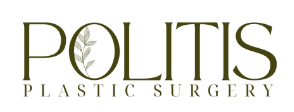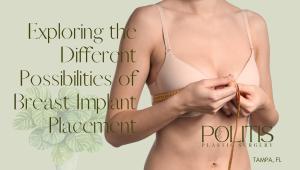KEY TAKEAWAYS:
- Breast reconstruction surgery options include autologous reconstruction and implant-based reconstruction.
- Immediate reconstruction is offered to the majority of patients, with very few experiencing delays.
- Dr. Effie Politis specializes in breast reconstruction and tailors each procedure to her patients’ unique needs.
Introduction
Breast reconstruction surgery is an essential procedure for many women who have undergone mastectomy or lumpectomy due to breast cancer. Dr. Effie Politis, a plastic surgeon in Tampa, FL, specializes in breast reconstruction and is dedicated to helping patients regain their confidence and sense of self. In this article, we will explore the different options for breast reconstruction surgery and discuss how Dr. Effie Politis tailors each procedure to her patients’ unique needs.
Patient Evaluation and Counseling
The first step in breast reconstruction surgery is a thorough evaluation and counseling of the patient. Dr. Effie Politis considers factors such as the patient’s medical history, hereditary predisposition to breast cancer, weight, lifestyle, and age. This information helps Dr. Politis and her team devise a patient-specific plan for breast reconstruction, ensuring the best possible outcome for each individual.
Immediate Reconstruction
Immediate reconstruction is offered to about 98% of Dr. Politis’ patients. This means that the reconstructive surgery takes place at the time of the mastectomy, with very few patients experiencing delays due to advancements in technology. By performing the reconstruction immediately, patients can begin their recovery with a sense of restored confidence and optimism.
Autologous Reconstruction
Autologous reconstruction is a technique that uses the patient’s own tissue, typically from the abdomen or back, to recreate the breast mound. This option can provide long-lasting results when performed on the appropriate candidate. However, it is essential for patients to understand that autologous reconstruction requires a considerable amount of downtime and may significantly impact their lifestyle during recovery.
Implant-Based Reconstruction
Implant-based reconstruction is the most common method used by Dr. Effie Politis, as it is suitable for a broader range of patients. In this procedure, an implant is used to recreate the breast mound, providing a natural and aesthetically pleasing result. Implant-based reconstruction is often preferred by patients due to its lower downtime and less invasive nature compared to autologous reconstruction.
Politis Plastic Surgery: Expert Care for Breast Reconstruction Patients
At Politis Plastic Surgery in Tampa, FL, Dr. Effie Politis and her team are committed to providing the highest level of care for breast reconstruction patients. With a focus on personalized treatment plans and a thorough understanding of each patient’s unique needs, Politis Plastic Surgery ensures that every individual receives the best possible outcome in their breast reconstruction journey.
TRANSCRIPTION:
Hi, my name is Dr. Effie Politis with Politis Plastic Surgery.
Breast reconstruction is a large part of my practice here.
Again, it was a large part of my training.
I do enjoy being able to offer this service to breast patients.
So we are reestablishing form and in some degree function to an area that is lacking
because of surgical alteration.
So our patients are referred to a breast or oncologic surgeon.
I work with multiple breast surgeons in town.
They’re all fantastic.
Unfortunately we’re seeing a younger cohort of patients between the ages of 30 to 40.
And if you look at the national statistics, that is usually 7 to 10% of the patients nowadays,
which is higher than a decade ago.
Their tumor biologies are a little bit more advanced, but approaching a breast reconstructive
patient is a little bit different than a breast augmentation.
So we want to evaluate and counsel the patients on their various options.
This takes into account their history, any hereditary disposition to breast cancers or
tumor oncology, their weight, their lifestyle, their age.
Like I said, a lot of them are a little bit younger nowadays.
So we devise a patient specific plan for them.
What does this mean?
So I’m well adverse in doing autologous reconstruction versus implant based.
So what that means is I offer, first of all, I offer immediate reconstruction.
That means at the time of mastectomy to about 98% of my patients.
There are only a few, if any patients that are ever delayed nowadays because of the technology
that we have.
So that means they will come out with some sort of reconstructive plan immediately after
their mastectomies.
I work in conjunction with the surgeon.
What I offer is whether we use their own tissue, usually from the abdomen or back, or I use
an implant to recreate the breast mount.
I would say that most of my cases are implant based cases because the patient has to be
a very good candidate for autologous.
They also have to be willing to accept the tremendous amount of downtime it’s imposing
on their lifestyle, but studies have shown that if done in the correct patient, using
their own tissue can truly offer great long lasting results.
REFERENCES:
- “When Is Breast Reconstruction Done? – Breastcancer.org.” 29 Jun. 2022, https://www.breastcancer.org/treatment/surgery/breast-reconstruction/when-is-reconstruction-done.
- “Autologous or “Flap” Reconstruction – Breastcancer.org.” 22 Nov. 2022, https://www.breastcancer.org/treatment/surgery/breast-reconstruction/types/autologous-flap.
- “Implant-Based Breast Reconstruction | Mount Sinai – New York.” https://www.mountsinai.org/locations/west/care/surgery/breast-reconstruction/implant-based-reconstruction.



 Breast augmentation
Breast augmentation

 Deciding on the
Deciding on the 


 Breast augmentation is a type of plastic surgery performed to enhance the size and shape of one’s breasts. Generally, the procedure is utilized to improve self-image and self-confidence. During the procedure, a
Breast augmentation is a type of plastic surgery performed to enhance the size and shape of one’s breasts. Generally, the procedure is utilized to improve self-image and self-confidence. During the procedure, a 
 Breast augmentation
Breast augmentation

 Breast augmentation is one of the most commonly performed
Breast augmentation is one of the most commonly performed 